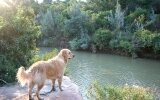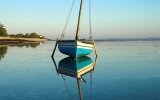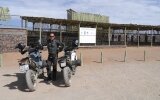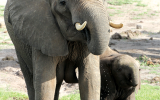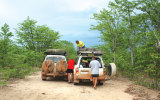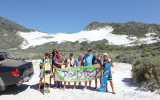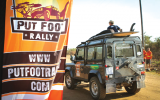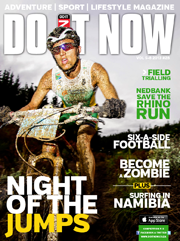- Magazine
- #readityourway
- Weekly Stories
- #shareyourstory
-
Adventure
- Abroad Travelling
- Africa Travelling
- Events
- Expos & Shows
- Festivals
- Fishing
- Free Diving
- Gliding
- Horse Riding
- Inspiring People
- Islands Travelling
- Kite/Windsurfing
- Motorbiking
- Motorised Water Sports
- Mountaineering
- Mountain Biking
- Off-road 4x4
- Off-road Motorbiking
- Paddling
- Performance Driving
- Photography
- Rock Climbing
- Rollerblading
- Sailing
- Scuba Diving
- Skateboarding
- Skydiving
- Snowboarding & Skiing
- Surfing
- Swimming
- Trail Running
- Wakeboarding
- Waveski Surfing
-
Sport
- Adventure Racing
- Fishing
- Free Diving
- Gliding
- Health & Fitness
- Horse Riding
- Inspiring People
- Kite/Windsurfing
- MMA
- Motorbiking
- Mountain Biking
- Multi-sport
- Off-road 4x4
- Off-road Motorbiking
- Paddling
- Performance Driving
- Photography
- Road Cycling
- Road Running
- Rock Climbing
- Rollerblading
- Sailing
- Scuba Diving
- Skateboarding
- Skydiving
- Snowboarding & Skiing
- Surfing
- Swimming
- Rugby
- Trail Running
- Triathlon
- Wakeboarding
- Waveski Surfing
- Lifestyle
- Calendar
Crossing the Kei
Words: André Troost | Photos: André Troost, Chris von Wielligh & Danie du Toit
Topic:
Africa Travelling
As the sun baked down on a typical spring afternoon in Stellenbosch I felt the urge to follow its rays into the unknown. An idea started to take form and I told Danie du Toit, my friend who is an accomplished traveller, about my adventurous plan. The plan entailed Danie, my mate Chris von Wielligh, and I travelling in a Land Rover from the Little Brak River, along the Sunshine Coast and through the Ciskei, then over the Kei River and into the Transkei. From there we would head to Coffee Bay and then make our way through the Eastern Cape Midlands towards the Great Karoo, and finally homewards to Paarl. What had started out as an 11-day holiday quickly became a cultural experience that transcended into a complete cultural awakening; a journey that clarified the essence of being human for me.

On the morning of our departure from the Little Brak River, there's an atmosphere of excitement amongst us as we sit inside the Land Rover with our essentials packed and the tank filled up. The sky is clear and the air brisk, and the sun's rays that I've been impatiently waiting for finally reveal their golden brilliance at the foot of the Outeniqua Mountain. Setting off, we make our way over the mountain, into the Langkloof, and past the sleepy towns of Haarlem, Joubertina, and Kareedouw. We shake hands with the N2 just before Port Elizabeth and spend our first night at a friend’s house near Bushman's River Mouth.
Driving to Mthata the next day marks the beginning of unfamiliar country for us. Turning off before Kei Mouth, we follow an 8 km 4x4 track that leads us into the stunning Ciskei wilderness. That night, stories about old school and current university days, and performing in bands are heartily regaled as we strum a few tunes on the guitars. Much later we doze off to the sound of insects loudly proclaiming their presence.
The next morning we cruise down the coast to the Double Mouth Campsite, situated just off the beach in a nature reserve and nestled between towering cliffs. Armed with our surfboards, camera, and other necessities, we wade across the river mouth and reach a seemingly endless, isolated beach. Diving into the waves with careless abandon, I close my eyes and savour the experience while committing every detail of this beautiful, unspoilt paradise to memory.
Waking early, we take a ferry across the Kei River, with Johnny Clegg’s ‘Great Heart’ reverberating at full volume. But as we approach Mazeppa Bay, it seems that Lady Luck has abandoned us: there are no campsites in Mazeppa Bay. The closest are in Cebe, about a two-hour drive back south, so after negotiating with a resident, we happily find ourselves camping in his backyard. Unfortunately, rain arrives during the night, but seeing the situation as a glass half full, we put up the umbrella and enjoy a fine Merlot as a delicious hoenderpotjie slowly cooks.
The following morning we are greeted by grey clouds hovering menacingly above our heads and everything is soaked through. Unfazed, we take the advice of some Mazeppa locals to visit Dwesa; a must see they say. Getting there is an adventure in itself, but with the help of Google Maps we navigate our way through the heart of Dutywa, past townships and into the hills, and then over the mountains again to finally arrive in Dwesa.
Dwesa is an isolated marine nature reserve with only traditional Xhosa villages surrounding it. The campsites allow you to experience nature in its purest form, with chattering vervet monkeys hanging from branches above our heads and bushbucks grazing peacefully around the ablution blocks, to fireflies twinkling under a star-studded sky and scores of different sounds emanating from the hills to lull us to sleep. Given the immense effort and time it has taken us to get here, we decide to stay for a second night and spend the time relaxing on a deserted beach and visiting the local shebeen with our new friend, Vuyani, the reserve's tour guide. Vuyani owns a piece of land high up on a hill overlooking the magnificent Wild Coast and lives off the land. What a great life!
During a visit to the shebeen, I sat on the stoep on an old wooden bench next to my two friends, with a beer in my hand, and as I watch the cattle and goats walk by and listen to the Xhosa elders and younger men talking about the village’s goat prices, I realise that this is where I belong. No Times Square, no Champs-Élyssées, no Big Ben, no Eiffel Tower, and no St. Peter’s Cathedral could make me feel what I felt here; an unconditional love for Africa.
The next morning Vuyani takes us on a guided tour through the reserve in the Land Rover, and because Dwesa receives so few visitors, the 4x4 trail is a bit more 4x4 than one would normally imagine, although it suits us perfectly. We stop to take a walk on an isolated beach between Dwesa and The Haven, and as I walk along the wet sand the only sounds I can hear are the crashing waves and songs of birds. But suddenly an unfamiliar smell tantalises my nose. The smell becomes stronger, and then I see it: droppings from a large animal. I ask Vuyani which animal’s droppings it is. He slowly lifts his face to the sky and fixes his eyes on something I can’t see. “Rhino,” he faintly replies. At first I don’t understand his emotional sentiment, but the rest of his reply quells any doubts. “Last year there were 13 here. Now not one is left. Poachers. They come at night. They fly in with helicopters,” he says. As I kneel beside the droppings I can now understand what he was looking at amongst the clouds, and the realisation of this incredibly sad situation, of what is and what should be, hits me hard and I pray.
It's time to leave so we reignite the Land Rover and set off along the back roads to Coffee Bay. The shortest route is a scenic 130 km one, but not the quickest, and the tar road that connects Coffee Bay to the N2 is a blessing after days of bumping, shuffling, and being shook up. After spending the night at the Coffee Bay Campsite, situated in an indigenous forest, we venture out the next morning and discover the town's delights, which include playing beach soccer with the locals, eating delicious pizzas at Pappazela’s Pizzeria, and enjoying unbelievable fishing and surfing experiences.
Excited about what adventures lie ahead on the second part of the trip, we bid the sea farewell. The road to Hogsback brings change and the landscape transforms from grassy hills to misty mountains. As we enter Hogsback, located high up in the Amathole Mountains in dense woods, a thick mist hangs over the town to give the beautiful old buildings an enchanted and mysterious feel. We book into the Away with the Fairies Backpackers, and as darkness falls we light a fire and braai with our new friends, Eben and Dominique.
Leaving Hogsback, we glide down the Amathole Mountains in the direction of Graaff-Reinet. It's fascinating to see the British architecture as we pass through the former British colonial towns of Alice, Fort Beaufort, and Bedford. Once again a shift in scenery takes place through the Land Rover’s windows as we drive into the heart of the Great Karoo, and come day's end we pitch a tent in the Karoo soil.
We set out just as the sun splashes its first golden rays over the Karoo plains and later meet up with friends at the Lord Milner Hotel in Matjiesfontein. From here the road takes us to Danie’s family’s farm, situated between Matjiesfontein and Sutherland, and we are blessed with the most spectacular sunset.
Our homeward journey takes us to Paarl and after exiting the Huguenot Tunnel the significance of the past 11 days suddenly dawns on me. Thinking of the smiling faces we saw in the Transkei villages and the amazingly diverse people we've met brings tears of happiness to my eyes and I feel so privileged to be part of this awesome country. The many different experiences blew my imagination, expanded my knowledge, and made for countless amazing memories that culminated into an overall experience I will never ever forget. Nkosi Sikelel’ iAfrika.
dinFO:
Travelling tips:
• If the focus is to experience, stop at every interesting sight.
It’s time well spent.
• Approximate costs were R2 200 per person, of which diesel accounted for about 70%!
• Around R100 was paid for accommodation per person, per night, although sometimes it was free.
• Accommodation options: Umthombe Kei River Lodge, close to Kei Mouth; Double Mouth Campsite, Morgan’s Bay; Dwesa Marine Nature Reserve, Dwesa; Coffee Bay Campsite, Coffee Bay; and Away with the Fairies Backpackers, Hogsback.
• If you’re going to drive on the back roads, make sure you have a detailed GPS - Google Maps will do. Most of the back roads have no or minimal boards indicating directions.
• Make sure you have the basic safety gear.
• Interact with the locals.
• Be open to new experiences. Embrace the situation!
• You haven’t seen the Transkei just by driving on the N2. Take the back roads! J
• Take photos of everything you see.
• Make a video diary - it's so much fun to watch afterwards.
Issue:
Issue 21 Jan '13

